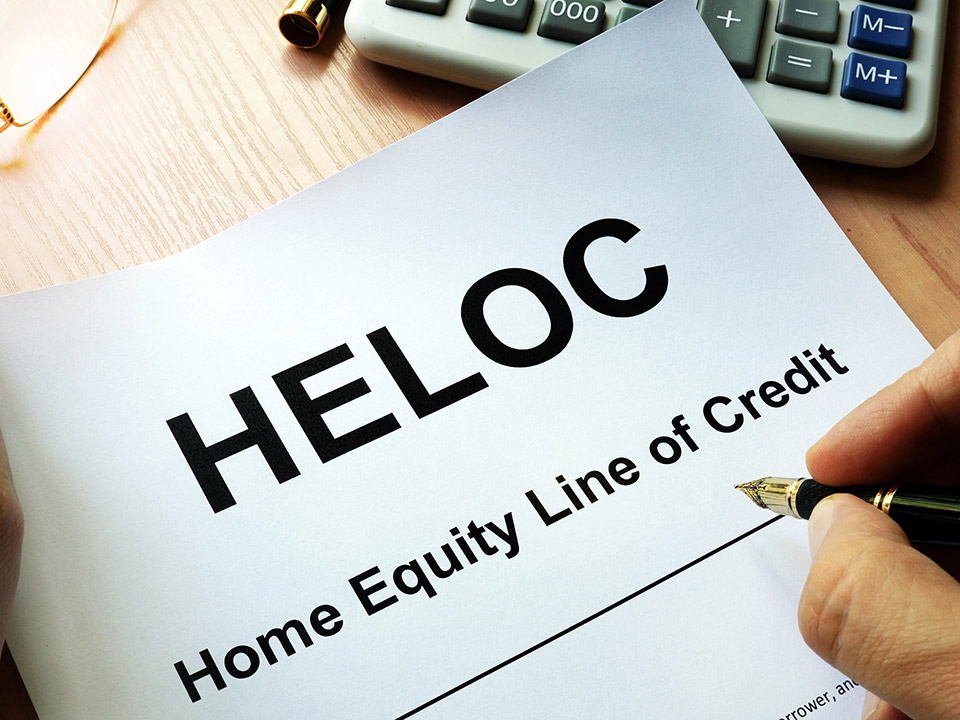Unlocking the Power of Your Home: A Comprehensive Guide to Home Equity Line of Credit.
Are you looking to unlock the potential of your home? A Home Equity Line of Credit (HELOC) might just be the key you’ve been searching for. In this comprehensive guide, we will explore everything you need to know about HELOCs and how they can help you harness the power of your home’s equity.
Whether you’re planning a major home renovation, consolidating high-interest debts, or funding your child’s education, a HELOC offers a flexible and affordable solution. With competitive interest rates and the ability to borrow against the appraised value of your home, a HELOC allows you to access the funds you need when you need them.
In this guide, we’ll break down the advantages of a HELOC, explain how it works, and provide valuable tips on how to maximize its benefits. We’ll also address common questions and concerns, helping you make informed decisions about your financial future.
With our comprehensive guide, you’ll gain the knowledge and confidence to leverage the power of your home through a Home Equity Line of Credit. Get ready to embark on a new chapter of homeownership and financial freedom. Let’s unlock the potential together.
Understanding home equity and how it works
Home equity is the difference between the current market value of your home and the outstanding balance on your mortgage. As you make mortgage payments and your home appreciates in value, your home equity grows. This equity can be a valuable financial asset, as it can be leveraged to access additional funds through a home equity line of credit (HELOC).
A HELOC allows you to borrow against the equity in your home, typically up to 80% of the home’s appraised value, minus the outstanding mortgage balance. This means that if your home is worth $300,000 and you have a $200,000 mortgage, you may be able to access up to $40,000 in home equity through a HELOC (80% of $300,000 is $240,000, minus the $200,000 mortgage balance).
The amount of home equity you have can be influenced by several factors, including the original purchase price of your home, the current market value, and the remaining balance on your mortgage. Understanding your home equity and how it works is crucial in determining whether a HELOC is a suitable financial tool for your needs.
Benefits of a home equity line of credit
A home equity line of credit offers a range of benefits that can make it an attractive financial option for homeowners. One of the primary advantages is the flexibility it provides. Unlike a traditional home equity loan, a HELOC allows you to access the funds as needed, rather than receiving a lump-sum payment. This can be particularly useful for ongoing expenses or projects that require a more flexible approach to financing.
Another significant benefit of a HELOC is the typically lower interest rates compared to other types of consumer loans, such as credit cards or personal loans. Because a HELOC is secured by the equity in your home, lenders are often willing to offer more favorable interest rates. This can translate into significant savings over the life of the loan, especially if you plan to make use of the line of credit over an extended period.
Additionally, the interest paid on a HELOC may be tax-deductible, depending on how the funds are used. If the HELOC is used for home improvements or to pay off high-interest debt, the interest may be eligible for a tax deduction, further enhancing the financial benefits. This can be a valuable consideration for homeowners looking to maximize their tax savings.
How to qualify for a home equity line of credit
To qualify for a home equity line of credit, there are several criteria that lenders will typically consider. The primary factors include your home’s equity, your credit score, and your overall financial situation.
First and foremost, lenders will assess the amount of equity you have in your home. As mentioned earlier, this is typically calculated as the difference between your home’s current market value and the outstanding balance on your mortgage. Lenders generally require a minimum of 20% equity in your home to qualify for a HELOC.
Your credit score is another crucial factor in the qualification process. Lenders will review your credit history and credit score to determine your creditworthiness and the level of risk you pose. A higher credit score, typically 700 or above, will generally result in more favorable terms and interest rates. Borrowers with lower credit scores may still qualify, but they may face higher interest rates or additional requirements.
In addition to your home equity and credit score, lenders will also consider your overall financial situation, including your income, debt-to-income ratio, and employment status. Lenders want to ensure that you have the financial capacity to make the required HELOC payments, so they will closely examine your ability to service the debt.
Using a home equity line of credit for home improvements
One of the most common and beneficial uses of a home equity line of credit is for financing home improvements and renovations. A HELOC can provide the necessary funds to undertake a wide range of home projects, from kitchen and bathroom remodels to additions and energy-efficient upgrades.
Utilizing a HELOC for home improvements can be advantageous for several reasons. Firstly, the interest paid on a HELOC used for home improvements may be tax-deductible, which can help offset the cost of the project. Additionally, home improvements often increase the value of your property, meaning the funds you borrow can potentially be recouped when you sell your home in the future.
Moreover, a HELOC offers a flexible and convenient way to finance home improvements. Instead of taking out a lump-sum loan and paying interest on the entire amount, a HELOC allows you to draw funds as needed, reducing the overall interest costs. This can be particularly useful for larger, multi-phase projects that require a more adaptable financing solution.
When using a HELOC for home improvements, it’s essential to carefully plan and budget for the project. Make sure to research the costs, obtain multiple quotes from contractors, and factor in any unexpected expenses that may arise. By taking a strategic approach, you can maximize the benefits of a HELOC and ensure that your home improvement project is a success.
Paying off debt with a home equity line of credit
Another common and beneficial use of a home equity line of credit is to consolidate and pay off high-interest debts, such as credit card balances or personal loans. By tapping into the equity in your home, you can access funds at a lower interest rate and use them to pay off these higher-interest obligations.
Debt consolidation through a HELOC can provide several advantages. Firstly, the interest rate on a HELOC is typically lower than the interest rates on credit cards or personal loans, potentially saving you a significant amount in interest payments over time. This can free up funds that can be used to pay down the principal faster, ultimately helping you become debt-free more quickly.
Additionally, a HELOC offers a more structured and manageable repayment plan compared to credit card debt. Instead of juggling multiple minimum payments, you can consolidate your debts into a single, fixed monthly payment, making it easier to stay on top of your finances. This can also simplify the budgeting and tracking process, providing a clearer picture of your financial obligations.
When using a HELOC to pay off debt, it’s important to exercise caution and develop a solid plan for managing the new debt. Ensure that you have a realistic budget and a clear strategy for paying off the HELOC balance within a reasonable timeframe. Additionally, avoid the temptation to accumulate new high-interest debt while you’re in the process of paying off the HELOC, as this could negate the benefits of the debt consolidation.
Investing in real estate with a home equity line of credit
A home equity line of credit can also be a valuable tool for real estate investors and homeowners looking to expand their investment portfolios. By tapping into the equity in your primary residence, you can access funds to purchase investment properties, make improvements to rental properties, or finance other real estate-related projects.
One of the key advantages of using a HELOC for real estate investing is the ability to leverage your home’s equity without having to sell the property. This can be particularly useful for investors who want to grow their portfolio without depleting their personal savings or taking out a traditional mortgage for each new investment property.
Additionally, the interest paid on a HELOC used for investment purposes may be tax-deductible, which can further enhance the financial benefits of this approach. However, it’s important to consult with a tax professional to understand the specific tax implications in your situation.
When using a HELOC for real estate investing, it’s crucial to carefully evaluate the potential risks and rewards. Consider factors such as the market conditions, the property’s cash flow potential, and your ability to manage the additional debt. Proper planning and due diligence are essential to ensure that your real estate investments align with your overall financial goals and risk tolerance.
Risks and considerations of a home equity line of credit
While a home equity line of credit can be a powerful financial tool, it’s important to be aware of the potential risks and considerations associated with this type of borrowing. One of the primary risks is the use of your home as collateral. If you are unable to make the required HELOC payments, the lender has the right to foreclose on your home, which could have devastating consequences.
Additionally, HELOCs typically have variable interest rates, which means that the interest you pay can fluctuate over time. This can make it challenging to budget and plan for your monthly payments, as the amount you owe can change from one billing cycle to the next. It’s essential to carefully consider the impact of potential interest rate increases and ensure that you have the financial capacity to manage the potential changes in your monthly obligations.
Another consideration is the potential impact on your credit score. Taking out a HELOC can affect your credit utilization ratio, which is the amount of credit you’re using compared to the total credit available to you. A high credit utilization ratio can negatively impact your credit score, potentially making it more difficult to obtain other types of financing in the future.
It’s also important to be mindful of the fees associated with a HELOC, which can include application fees, appraisal fees, and annual maintenance fees. These costs should be factored into your overall financial planning to ensure that the benefits of the HELOC outweigh the associated expenses.
Steps to apply for a home equity line of credit
If you’ve decided that a home equity line of credit is the right financial solution for your needs, the next step is to navigate the application process. Here are the typical steps to apply for a HELOC:
- Determine your home’s equity: As mentioned earlier, lenders will assess the amount of equity you have in your home, so it’s important to calculate this figure accurately. You can do this by subtracting your current mortgage balance from your home’s current market value.
- Check your credit score and report: Review your credit score and credit report to ensure that there are no errors or issues that could impact your HELOC application. If necessary, take steps to improve your credit score before applying.
- Shop around and compare lenders: Research and compare HELOC offers from multiple lenders, including banks, credit unions, and online lenders. Compare interest rates, fees, and repayment terms to find the best fit for your needs.
- Gather the required documentation: Lenders will typically require documentation such as proof of income, tax returns, and information about your existing mortgage and other debts.
- Submit your HELOC application: Once you’ve selected a lender, you’ll need to complete the application process, which may include a home appraisal and a review of your financial information.
- Review and sign the HELOC agreement: If your application is approved, the lender will provide you with the HELOC agreement, which you’ll need to review and sign to finalize the process.
By following these steps and working closely with your lender, you can navigate the HELOC application process and unlock the financial power of your home’s equity.
Conclusion: Is a home equity line of credit right for you?
Deciding whether a home equity line of credit is the right financial solution for you requires careful consideration of your individual circumstances and goals. A HELOC can be a powerful tool for homeowners, offering flexibility, lower interest rates, and the potential for tax benefits. However, it’s essential to weigh the potential benefits against the risks and ensure that you have a solid plan in place to manage the debt responsibly.
If you’re considering a HELOC for home improvements, debt consolidation, real estate investing, or any other purpose, it’s crucial to thoroughly understand the terms, conditions, and potential impact on your finances. Engage with a trusted financial advisor or lender who can guide you through the process and help you make an informed decision that aligns with your long-term financial objectives.
Ultimately, a home equity line of credit can be a valuable financial resource, but it’s not a one-size-fits-all solution. By carefully evaluating your needs, exploring the options, and developing a strategic plan, you can unlock the power of your home’s equity and take a significant step towards achieving your financial goals.





